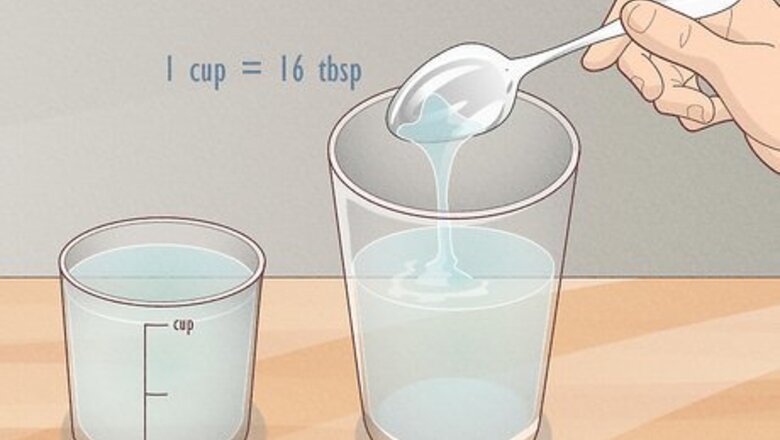
views
- Measure with tablespoons or teaspoons instead. 16 tablespoons equal 1 cup, and 48 teaspoons equal 1 cup.
- Alternatively, use a kitchen scale. 1 cup of liquid equals 240 grams on a scale.
- Eyeball your liquid measurements using estimated size comparisons if you’re in a pinch. 1 cup of liquid is roughly the size of an apple.
With Tablespoons & Teaspoons
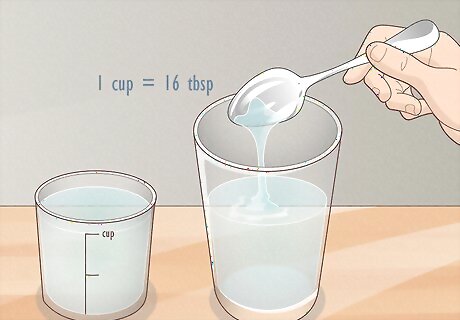
Use 16 tablespoons, which equals 1 cup. The easiest way to convert your cup measurement into tablespoons is to remember that 1 cup equals 16 tablespoons. So, if you need a ½ cup, you’ll need 8 tablespoons of liquid. Measure your tablespoons with a measuring spoon for the most accurate results.

Use 48 teaspoons, which is the same as 1 cup. While you’re cooking or baking, keep in mind that 1 cup or 8 fluid ounces equals 48 teaspoons. This means that if a recipe calls for ½ cup of water, you’ll need 24 teaspoons of water.
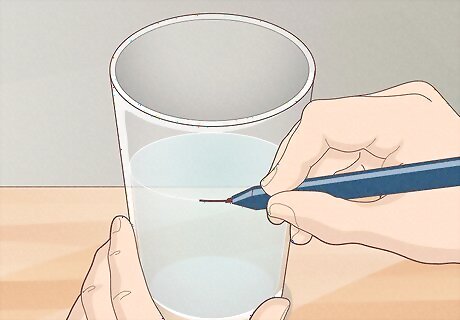
Mark a container after measuring with tablespoons or teaspoons. Since you don’t have a measuring cup, why not make your own? Use a tablespoon or teaspoon conversion and scoop ¼, ½, and 1 cup of liquid into a spare clear container. Then, trace the line of liquid onto the container with a permanent marker. Now, when you need that liquid measurement again, you can just fill up the container to the correct line. Reuse an empty and cleaned-out yogurt container or sauce jar to limit waste.
With a Kitchen Scale
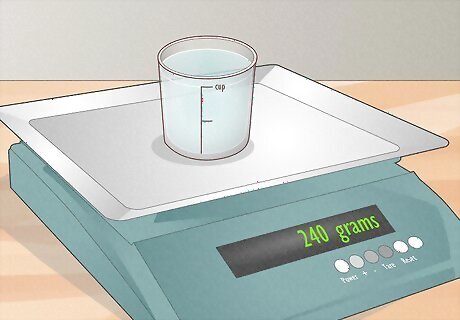
Convert your liquid measurement to grams (1 cup = 240 grams). Most recipes give liquid measurements by volume rather than weight. When using a kitchen scale to weigh liquids, you must first convert the needed amount from cups or ounces to grams. There are 8 fluid ounces in 1 cup, which is about 240 grams. For instance, if you need ½ cup of water, you’ll need 120 grams. Generally, 1 fluid ounce equals 1 regular ounce.
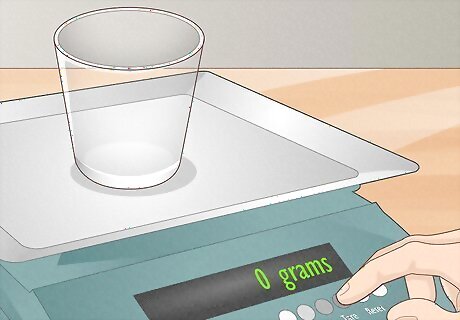
Calibrate your scale to exclude an empty vessel’s weight. Select an empty vessel to hold your liquid: cup, glass, pot, yogurt container, etc. Then, place it in the center of the scale. Hit the “tare” or “zero” button to set your scale. This way, it’ll only measure the weight you add to the vessel. The scale should read “0” once the button is pressed.
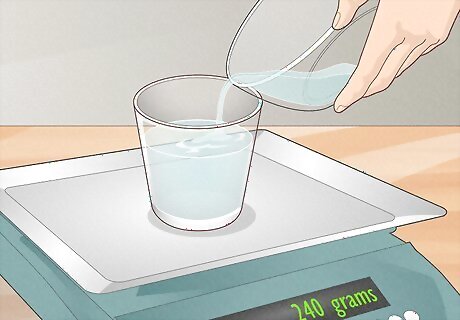
Pour your liquid into the vessel. Keep the vessel in the center of the scale, and gently pour in the liquid. Stop pouring once the scale reads the weight you need. If you go over the needed amount, simply pour the excess out in the sink. Some scales let you select what type of liquid you’re measuring. If yours has this feature, use it, as some liquids can be denser or heavier than others. If you have multiple liquids to measure, measure them in the same vessel or recalibrate the scale with a new vessel.
With Size Comparisons
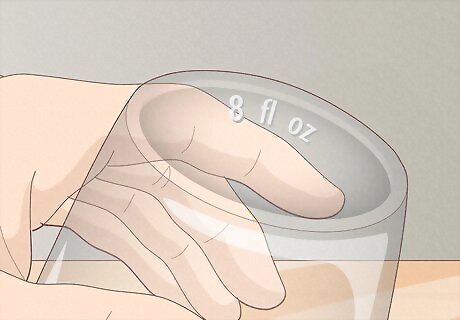
Use a cup or glass that holds the same amount of fluid ounces. Look around your kitchen and inspect the bottom of any cups or glasses you have. Believe it or not, they may say how much liquid they hold in ounces on the bottom. Convert the amount of liquid you need to ounces and use the corresponding cup. There are 8 fluid ounces in 1 cup. So, if a recipe calls for 2 cups of water, fill an 8-ounce glass twice. If it calls for a ½ cup, fill the glass halfway.

Use another object as a reference point. If you don’t need an exact measurement, eyeballing the amount of liquid you need can work just fine! Place a glass cup on the counter, and then place one of the objects below next to it. Fill the glass with liquid to match the height of the object beside it. For ¼ cup, use a large egg. For ½ cup, use a tennis ball. For 1 cup, use an apple. Keep in mind that these are only estimates, so this method may not be best for things that need precise measurements, like baking a cake.

Check the level of liquid straight on. Did you know that how you’re standing or sitting can change a liquid measurement? Always set your cup or glass on a flat, level surface and crouch down to see where the liquid ends. The curved arc at the liquid’s surface (the one you use to measure) is called the meniscus line.














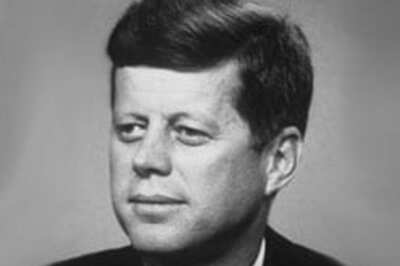





Comments
0 comment